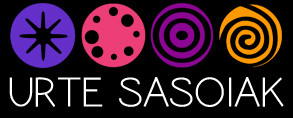This originally Bizkaian dance used to be performed on Saint Peter’s Day, 29 June. In addition it started to be danced on other occasions, and has even expanded to some locations of Araba.
The dance was formerly also called Soka-dantza or Elizateko aurreskua, although nowadays is mostly known as Erregelak. It is divided into five movements: aurrez-aurrekoa, abarketak, erregelak or ingurutxoa, banako zaharra and eskasak or zortzikoa. The erregelak movement, in turn, consists of two subsections: aurreskua and atzeskua. These two dances, same as many others, used to be sung. This practice made it much easier for the dancers to learn and perform them; many a time they did not count with a txistu player at rehearsals, so the dancers sung the lyrics themselves.
The dance would succeed the main service in the presence of the village authorities. Eight dancers took part, and amongst them the aurresku and the atzesku dancers were considered most prestigious. The mayor and the deputy mayor chose two women married in that same year, and the banako-zaharra dance was dedicated to them. The morning show finished with the orripekoa, arin-arina or porrusalda and biribilketa steps.
In the afternoon the Soka-dantza dance was executed once and again but without the presence of the authorities. The dancers themselves picked the girls to honour amongst the public.
Erregelak (aurreskua)
Bizkaia, Araba




